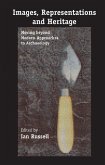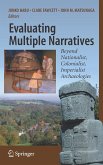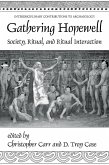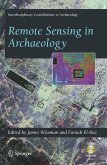Archaeological analysis operates on a continuum of scale from the microscopic analysis of a single artifact to regional interpretations of cultural adaptations over thousands of years. A common assumption is that shifting from one scale to another in space and time is a seamless process. Scale in this sense is invisible, a mere mathematical abstraction. Yet, issues of scale exist at the fundamental level of archaeological interpretation. The traditional analytical debate in archaeology - between advocates of the so-called ''processual'' and ''postprocessual'' approaches - ranges around the question of scales of reasoning. At the one extreme, remote observation and the ability to interpret events and processes over vast reaches of time and space are possible, because the analysis concerns the hoped-for elucidation of general cultural processes; at the other, they are not, as both analyst and subject are isolated in their own subjectivities. Analysts occupying the middle ground often advocate a ''multidimensional'' or ''holistic'' approach, which involves multiple scales of analysis and interpretation. As the battleground tends to be the degree to which specific datasets and analytical processes justify the interpretations put forth, archaeologists rarely - dress issues relating to the profound shifts in the scale of visualization necessary in all approaches to the past. And why should they? Ignoring scale is the concession archaeology makes to interpretation.
Hinweis: Dieser Artikel kann nur an eine deutsche Lieferadresse ausgeliefert werden.
Hinweis: Dieser Artikel kann nur an eine deutsche Lieferadresse ausgeliefert werden.
"Archaeologists from North America, Europe, and Australia grapple with the concept of scale and its intentional and unintentioanl influence in their practice. The fundamental problem is that archaeologists, being human, have trouble imagining things very much larger or very much smaller than humans, and things very much longer or very much shorter than a human lifetime. The contributions look at space, time, and size in the past and the present; problems of scale and their identification; and new methodologies and understandings for interpreting scale." (Reference and Research Book News, November 2006)








